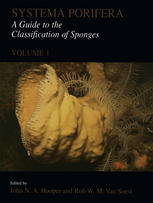

Most ebook files are in PDF format, so you can easily read them using various software such as Foxit Reader or directly on the Google Chrome browser.
Some ebook files are released by publishers in other formats such as .awz, .mobi, .epub, .fb2, etc. You may need to install specific software to read these formats on mobile/PC, such as Calibre.
Please read the tutorial at this link: https://ebookbell.com/faq
We offer FREE conversion to the popular formats you request; however, this may take some time. Therefore, right after payment, please email us, and we will try to provide the service as quickly as possible.
For some exceptional file formats or broken links (if any), please refrain from opening any disputes. Instead, email us first, and we will try to assist within a maximum of 6 hours.
EbookBell Team

4.7
16 reviewsResearch whilst compiling this book has uncovered a fauna about twice the size as that previously published in the literature and consequently Systema Porifera revises and stabilizes the systematics of the phylum to accommodate this new knowledge in a contemporary framework. Practical tools (key illustrations, descriptions of character) are provided to facilitate the assignment of approximately 680 extant and 100 fossil genera.
Systema Porifera is unique making sponge taxonomy widely available at the practical level of classification (genera, families, order). It is a taxonomic revision of sponges and spongiomorphis (such as sphinctozoans and archaeocyathans) based on re-evaluation of type materials and evidence. It is also a practical guide to sponge identification providing descriptions and illustrations of characters and interpretation of their importance to systematics. Systema Porifera addresses many long standing nomenclatural problems and provides a sound baseline for future debate on sponges and their place in time and space.
Systema Porifera describes 3 classes, 7 subclasses, 24 orders, 127 families and 682 valid genera of extant sponges (with over 1600 nominal generic names and an additional 500 invalid names treated). Treatment of the fossil fauna is less comprehensive or critical, although 6 classes, 30 orders, 245 families and 998 fossil genera are mentioned. Keys to all recent and many fossil taxa are provided.